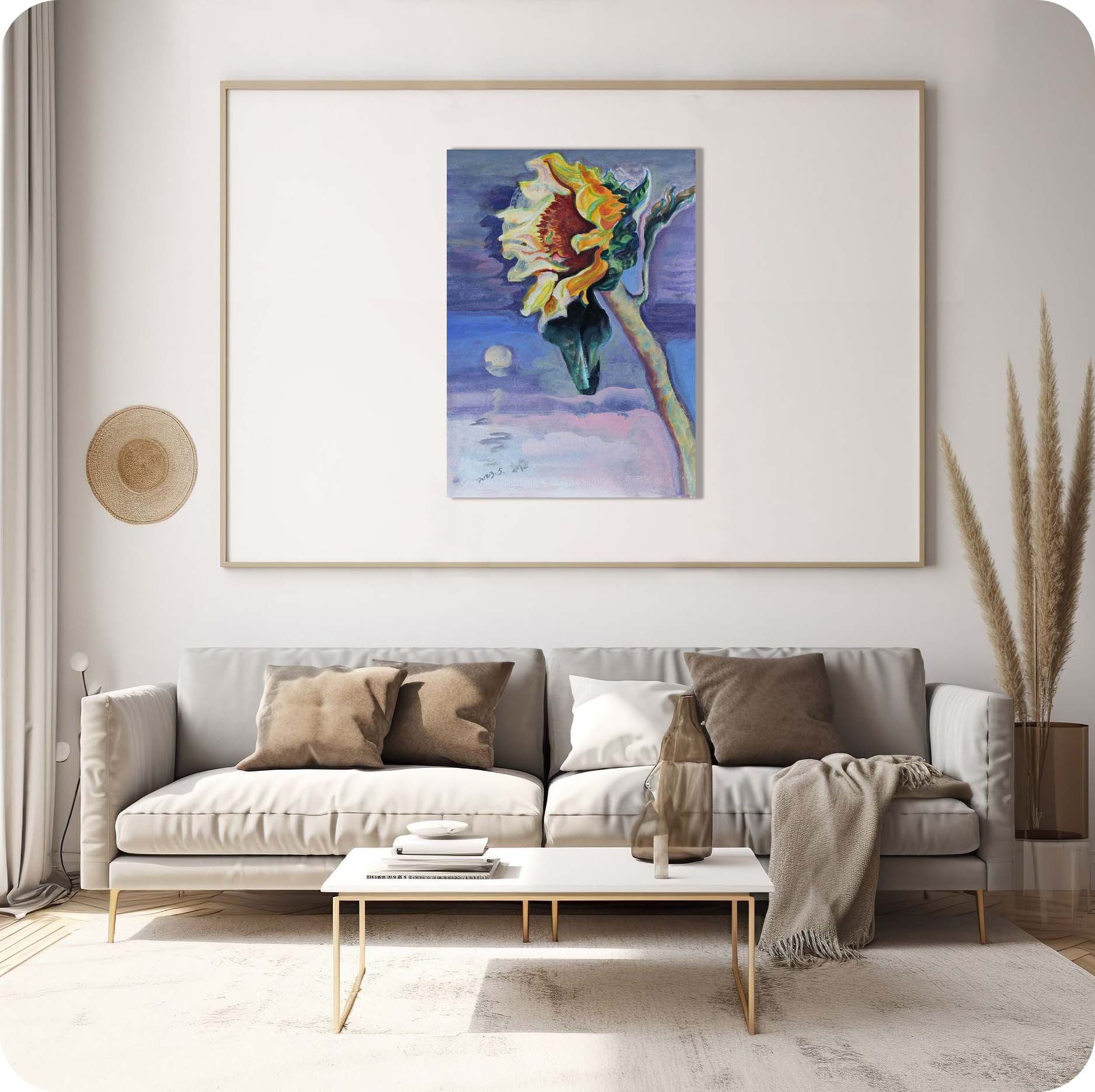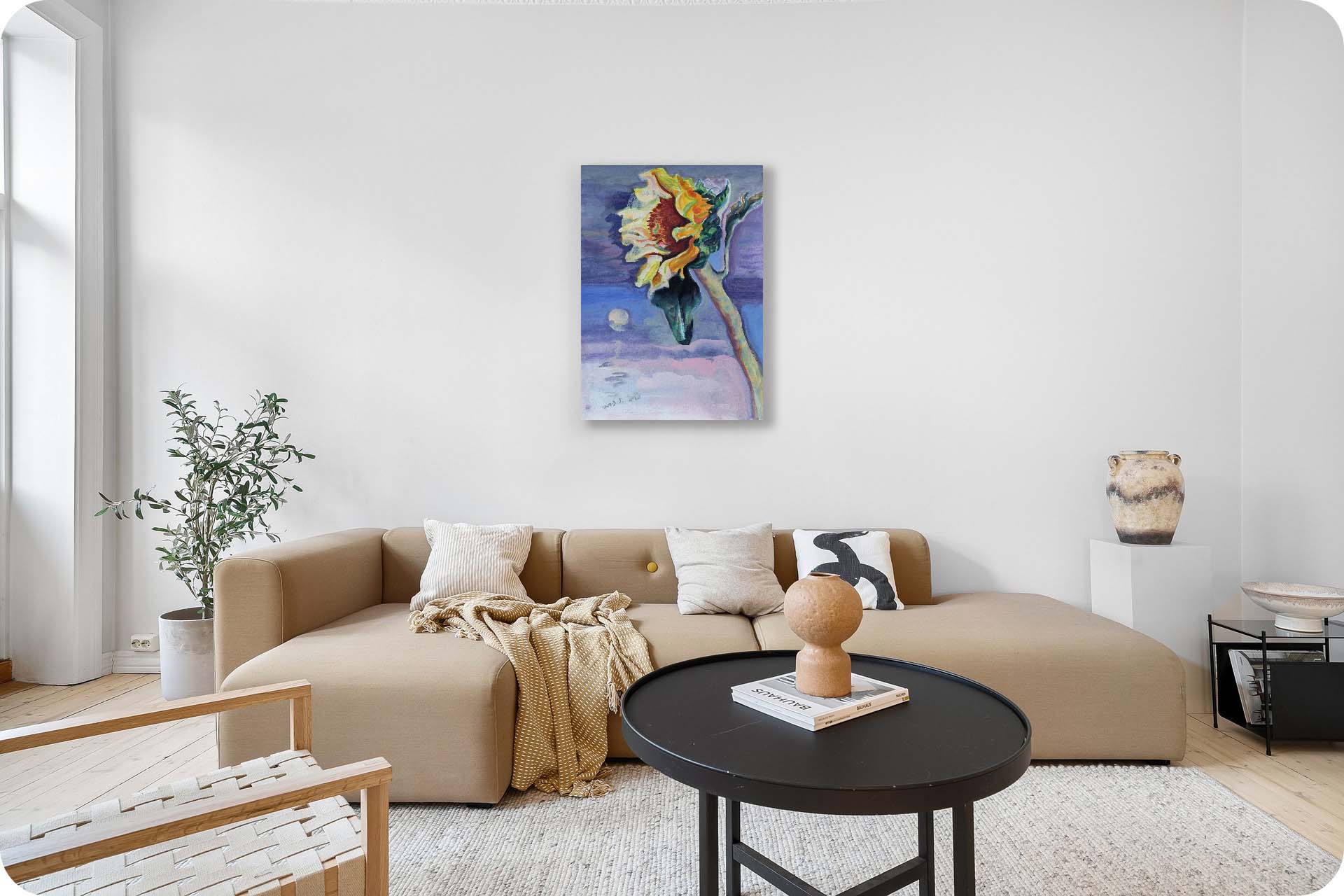This painting was created in 2023. This year I was looking for a balance between life and desire while going out, and the work turned into lively small-size paper creations.
Miss Sunflower came by chance and only said hello. That's all.
Inches: x in
Size without the frame: x cm
Country: China
Date: 2023
Materials: Acrylic paint on paper.
Condition: well preserved
Creative themes and style | My works revolve around the creative concept of "The land of humanity, People on the land". The people in the painting are people in nature, and the lines, shapes, and colors are close to nature. The nature in the painting is nature in the eyes of humans, existing in interaction with humans.I don’t pursue a series of works with a fixed and continuous style. I hope that the style of the pictures will synchronize with the changes in my life and always remain oscillating. The performance of the work must be in sync with the development of one's own life in order to be Sincere and powerful. Ideas are later.
An Interview with Artist Philo by Artphiloso Gallery
If you would like to collect this artwork or know more about the artist, please contact us.
sale wall art,contemporary artwork for sale,art gallery for sale,abstract art prints for sale,estate sale paintings.


The sunflower has been given a personified form: its petals resemble flowing strands of hair, while the central disk subtly reveals facial contours. It no longer appears as a mere plant, but as a being endowed with emotion and consciousness, quietly gazing at or smiling toward the viewer.
The artist boldly juxtaposes a violet-blue night sky with the yellow and green petals, creating a striking clash of warm and cool tones. The chromatic resonance between the flower and the moon imbues the painting with a dreamlike atmosphere, full of romance and dramatic tension.
The moon and its reflection form an upward–downward symmetry, interacting with the tilted posture of the sunflower. This structure suggests a hidden dialogue between the flower and the celestial body, lending the work a poetic depth and leaving the viewer with boundless space for interpretation.
Miss Sunflower can be situated within Symbolist floral painting as well as contemporary personified-plant art. It breaks away from traditional still-life realism, endowing the flower with human traits and symbolic meaning. The work is particularly suited for surrealism-themed exhibitions or showcases on floral symbolism in art, where it functions as a narrative visual emblem.
Unlike conventional floral still lifes, Miss Sunflower fuses natural imagery with the realm of human spirit, placing it within the niche field of conceptual floral art. It may serve as a personal locus of contemplation in private collections, while its symbolic power and visual intensity also make it a strong candidate for inclusion in contemporary art markets and symbolist painting collections.
A: Click here to view ARTPHILOSO's Guide for Collectors.
